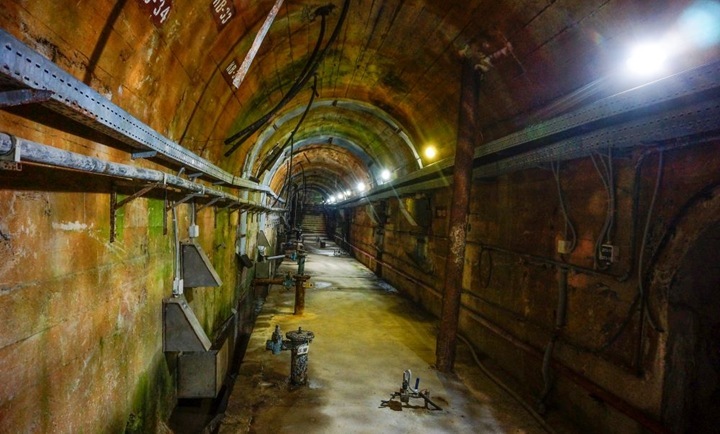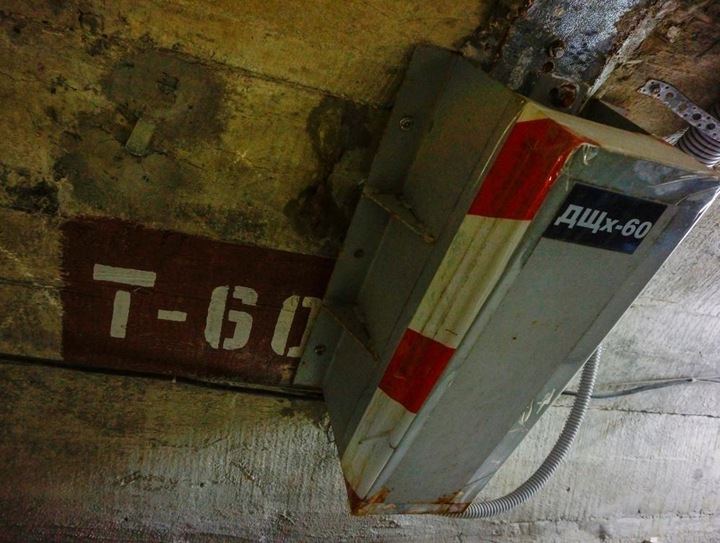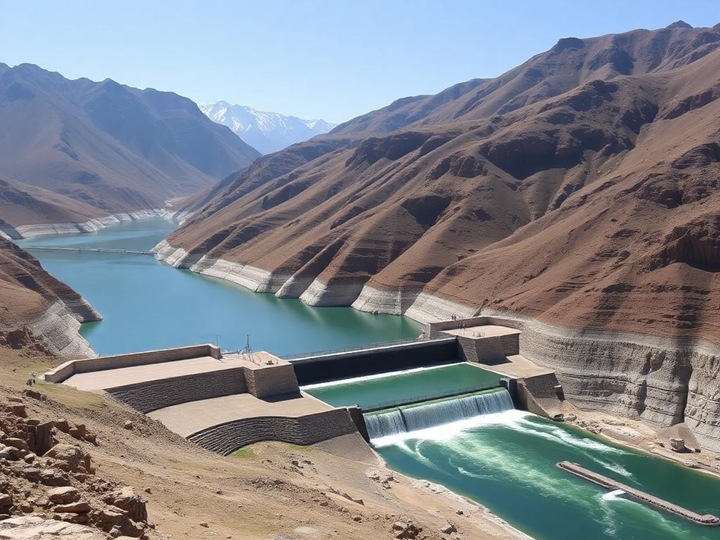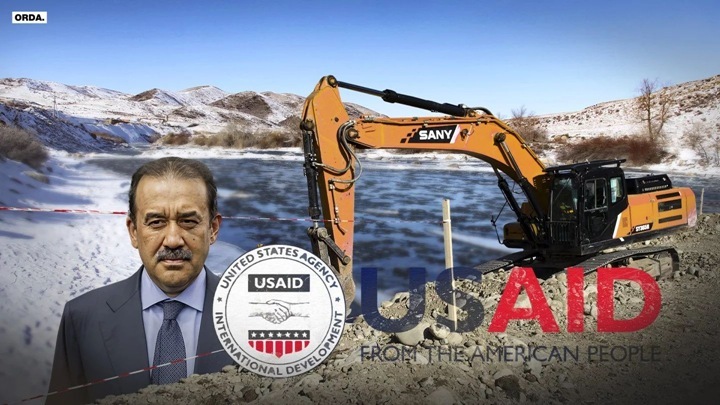Ust-Kamenogorsk HPP: when water needs a special permit
The view from the height of the Ust-Kamenogorsk hydroelectric power station can decorate the covers of the coolest glossy magazines. In the gorge, squeezed by rocks, there is a forty-meter dam with a dam-like building of the engine room. In the upper reaches is the Ust-Kamenogorsk reservoir, which repeats the historical course of the Irtysh. The very fact that a man-made bridge holds a reservoir 71 km long and 650 million cubic meters in volume, you see, sounds impressive. The water mass presses on the concrete and exactly according to the saying is looking for a way to make its way. In turn, experts are looking for technologies and applying knowledge to subordinate the power of the river to exclusively peaceful purposes. For this they have a special underground gallery – the poterna. Figuratively speaking, the path is in the depths of the “soul” of the dam.

If man-made tourism operated at the hydroelectric power station, Poterna would have become a magnet for diggers and stalkers long ago. However, the station is a high–security facility. Therefore, the massive steel door to the dungeon was opened here only for the correspondent of “Kazpravda”.
…A dark corridor with a path of lamps on the ceiling, booming sounds, the noise of a stream, as if a stream runs nearby… My guide is the engineer of the group for the operation of buildings and structures of the HPP Gleb Shalaev. He immediately cites data that journalists are usually interested in: the total length of the hydroelectric power station is 461 m, the dam is 391 m, the dam is about 30 meters shorter due to the indentations from the deaf part. The engine room is located at the 311 mark on the Baltic elevation system, below that are the facilities of the mines for servicing hydraulic units – the 307th and 300th marks.
– And we, – says Gleb, – are even lower. We are at the bottom of the Irtysh. We can say we are walking along the river bottom. The lowest mark is 286.
I look closely: the gallery really goes up and down a little. Archival information has been preserved, as in the military 1943, the Gesstroevites were preparing for the future dam: more than 67 thousand cubic meters of soil and rocks were manually removed, 6 thousand cubic meters of ice were blown up and removed, 12 thousand cubic meters of ripples were harvested and lowered to the bottom, 20 thousand cubic meters of stone were loaded into the bridge. 80% of the Gesstroev team consisted of women. I would like to believe that someday in Ust-Kamenogorsk they will pay tribute to the memory of these great workers – they will erect a monument or an obelisk.
The hum intensifies. The engineer points up: a pressure pipeline is laid directly above their heads, through which water is supplied to the turbine unit. A stream of hundreds of cubic meters is rushing over me every second! I can imagine what kind of selfie session the diggers would arrange in this brutal entourage. I notice a big black telephone on the wall – in old movies the characters approached such, picked up the phone and said importantly: “By the phone.”
– Now these means of communication are a rarity, a historical detail, – says Gleb. – That’s why we don’t remove it. By the way, it is in working condition, it serves for operational communication with the duty officer.
There are large noticeable T and TS designations on the walls throughout the tower, for example, T50, TS 25. I look closely – I don’t notice anything, I touch it with my palm – the wall is wet. My guide explains: this is how temperature seams, or, more simply, cracks, are marked in the gallery. If you talk to the builders, they generally consider concrete to be a living material: it takes a hundred years to gain a fortress, gives a draft, “breathes” when weather conditions change. That is, it is a plastic material. Each concrete dam must have seams that allow it to relieve stress in the hydraulic structure. Their parameters are hundredths of a millimeter, the maximum allowable value is 0.1 mm. Where is there to see such cobwebs with the naked eye!

All these T and TS are under the constant supervision of specialists and automation. Gleb shows a miniature device installed just to monitor the cracks. It is based on the principles of electrical measurement. Sensors can detect changes almost in microns.
The further we go down the tunnel, the louder the sounds of dripping and gurgling. Water flows along the gutters along the walls, the air is humid. The atmosphere of a mysterious dungeon. Gleb assures with a smile: this is as it should be, and leads to adaptation, as if from the magic class of the teacher of the Stem at Hogwarts.
– This is a slit meter dropper, – the engineer explains. – All droppers are marked, for example, KP is the dropper of the right–bank dam, KL is the dropper of the left–bank dam. Water will always find a place to run to, there are foci where it is gradually filtered, and the instruments show them. We’re watching them.
The readings of the equipment are regularly recorded in the observation logs. Specialists have been conducting them since the launch of the station in the 1950s, here you can find “ledgers” that are 50-60 years old. Such databases are invaluable in the implementation of artificial intelligence.
– Be careful! – the specialist warns when I almost run into a strange pillar in the middle of the gallery.
It turned out that I had a piezometer under my feet, expensive equipment that measures the pressure and water level in the foundation. According to Gleb, their readings may change for various reasons, for example, with temperature changes or changes in the number of working hydraulic units. This is normal.
Nearby is another device located in a special well to monitor the same parameters – level, pressure, temperature, flow rate. According to them, there are criteria values, including “green”, which cannot be exceeded. Many drainage wells are 30-40 years old, they are already the history of hydroelectric power stations. In general, the equipment allows you to get a picture of how the dam resists the pressure of the river.
– If the indicators were growing, we would have sounded the alarm, – says the engineer. – But they don’t grow.
I look at the numerous devices and understand: there is no question of secrets in the underground tunnel. All the losses are under the “hood” of the HPP specialists. They see any changes, and in microdoles. For example, tilt meters can record the deviation of the dam relative to the vertical in one-half degree.
– The monitor displays data on all the main criteria, – says Gleb. – It would seem that it is possible not to leave the office. But we have a service that, as before, continues to take measurements manually. They walk, check with a caliper, with a stopwatch. Control is never superfluous.
The excursion into the depths of the “soul” of the Gesovskaya dam is coming to an end. The engineer escorts me to the checkpoint and invites me to come to the station, for example, in two or three years. Now they are starting a project to introduce an automated diagnostic and control system, or predictive diagnostics. Including using 3D models. The program will reflect parameters such as stress in concrete, temperature, deformation.
– Perhaps we will be the first in Kazakhstan to introduce such a system, – the specialist promises. – Now everyone is interested in seeing historical mechanisms, but in thirty years our automata and our programs will become the same rarity.
Galina Vologda (“Kazakhstanskaya Pravda”)


